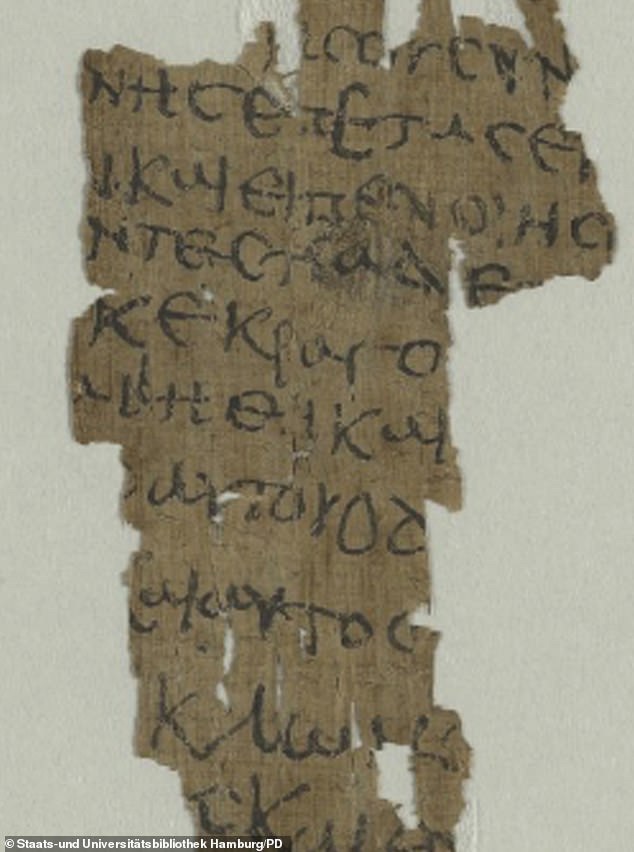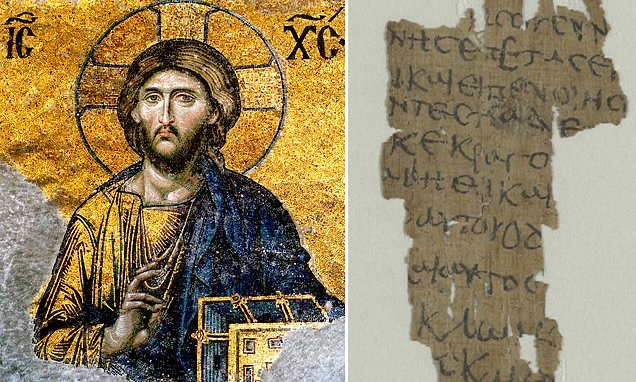An ancient Egyptian manuscript has unveiled a previously unknown story of Jesus performing a childhood miracle. The 2,000-year-old papyrus recounts the ‘vivification of the sparrows,’ where the young Jesus is said to have transformed clay figures into living birds, known as the ‘second miracle.’
The handwriting suggests the manuscript may have been an educational exercise in a Christian school or community in 4th or 5th Century Egypt. This story is thought to originate from the Infancy Gospel of Thomas, a non-canonical text describing Jesus’ early life, written in the 2nd Century.

The earliest known version of this gospel was previously dated to the 11th Century. However, this manuscript had gone unnoticed at the Hamburg State and University Library in Hamburg, Germany.
Researchers from DailyMail.com found the papyri while examining manuscripts and identified the name of Jesus within the text.
Dr. Lajos Berkes, a co-researcher and theology lecturer at Humboldt-Universität, explained that the document was initially thought to be something mundane, like a personal letter or shopping list, due to its unrefined handwriting. The discovery of the word “Jesus” led to further investigation, which revealed its true nature. By comparing it with other digitized papyri, they deciphered it letter by letter and confirmed its significance.
The Infancy Gospel of Thomas (IGT) narrates the early years of Jesus, spanning ages five to twelve, and was written in the 2nd century to provide insights into his childhood. However, it was excluded from the Bible due to questions about its authenticity.
The Bible aimed to focus on Jesus’ teachings, miracles, and the events leading to his crucifixion.
One story from the IGT depicts a five-year-old Jesus by a stream, forming 12 sparrows from soft clay in the riverbed. His father, Joseph, scolds him for working on the Sabbath, a day reserved for rest and worship. Jesus then commands the clay figures to ‘rise as living birds,’ and they miraculously come to life.
Professor Dr. Gabriel Nocchi Macedo of the University of Liège shared this account with DailyMail.com.

The papyrus fragment, measuring four by two inches, contains 13 lines from a well-known story in the Infancy Gospel of Thomas (IGT). Researchers believe the text served as a writing exercise in an educational or monastic setting, suggested by its awkward handwriting and irregular lines.
The exact timeline of the discovery is unclear, with no information on when the papyrus was found. Dr. Macedo noted that it likely joined the library’s collection after 2001.
There are two main theories about its acquisition: it could be part of the original collection acquired by the German Papyruskartell between 1906 and 1913, or it may have been added through purchases up to 1939. Alternatively, it might have come from Berlin in 1990 with other unsorted papyri.
Before this discovery, the oldest known IGT manuscript dated to the 11th century. The IGT is an apocryphal gospel describing Jesus’ childhood, which is not covered in the Bible or other canonical texts. Its authorship is unknown, and it is often considered akin to fanfiction due to its loosely connected miracle stories.
The exclusion of Jesus’ early life from the Bible is not entirely understood, but it is believed the focus was intended to be on his mission and sacrifice. Dr. Macedo and Dr. Berkes plan to publish a critical edition and commentary on the manuscript in the Journal of Papyrology and Epigraphy, offering valuable insights into the text’s transmission and dating it to the 4th to 5th century.
